A Bone to Pick
Scientists use many types of clues to study and understand different environments, especially the types of animals that live in certain ecosystems. Clues can include scat or poop, footprints, hair and even markings on the ground, such as broken logs or holes in the dirt. There is another type of clue that helps scientists learn about how animals move, eat and their roles in the ecosystem: skulls!
Just about all types of animals, predominantly vertebrates, have some sort of skull, which is a hard, structure made of bone that forms the head. All mammals have skulls, but the structure of each differs according to what species of mammal it is. To distinguish between each type of mammal skull, there are different factors to investigate. First, you need to look at the size of the skull, which can be done by using a measuring tape and recording the length, in centimeters, from end to end. Once you figure out the length of the skull, you will be able to calculate the body size of the animal by multiplying the skull length times 5. The product, or result, is an estimate of the animal’s length from the snout to base of the tail, where the tail begins.
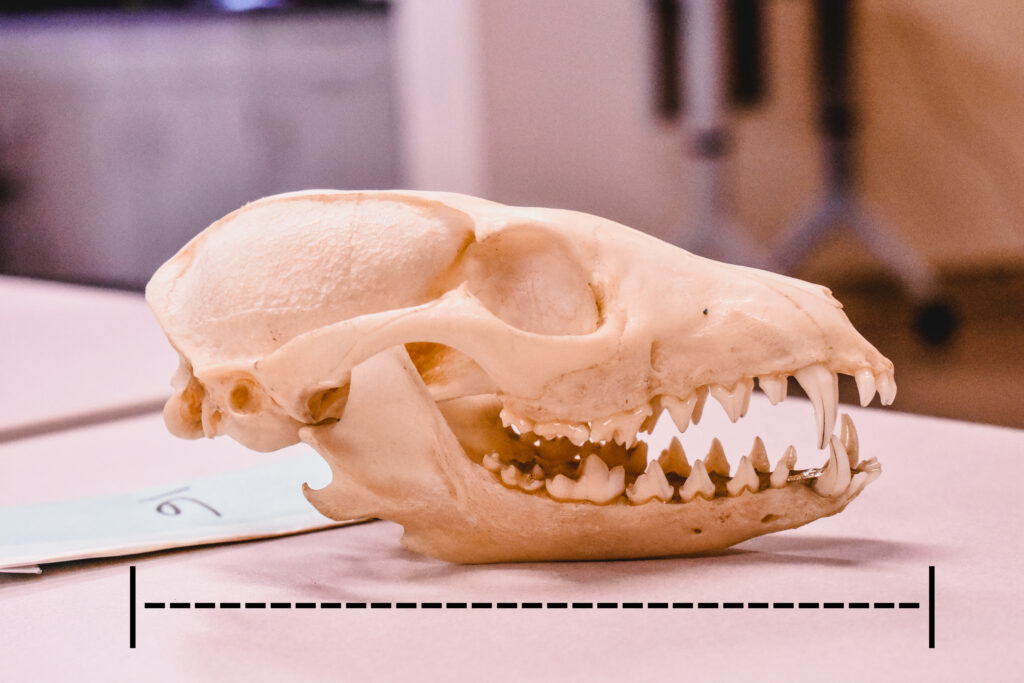
Next, look at the position of the eye socket. Eye position can tell us a lot about the role of an animal in the food chain. Animals with eyes to the side are prey species because this allows them to see the big picture and avoid predators. Animals with forward facing eyes suggest that an animal is a predator. Having eyes on the front of your face is really helpful when you need to see depth perception. Things that hunt need to know how far away their prey is from them.

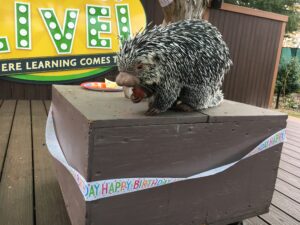
There are always some exceptions to the rules, such as some arboreal animals like monkeys have forward facing eyes to help them understand the distance between tree limbs as they move throughout their environment. To help remember which type of animal has forward facing eyes or eyes on the side of their head, use this catchy saying: Eyes on the front, like to hunt. Eyes on the side, like to hide!
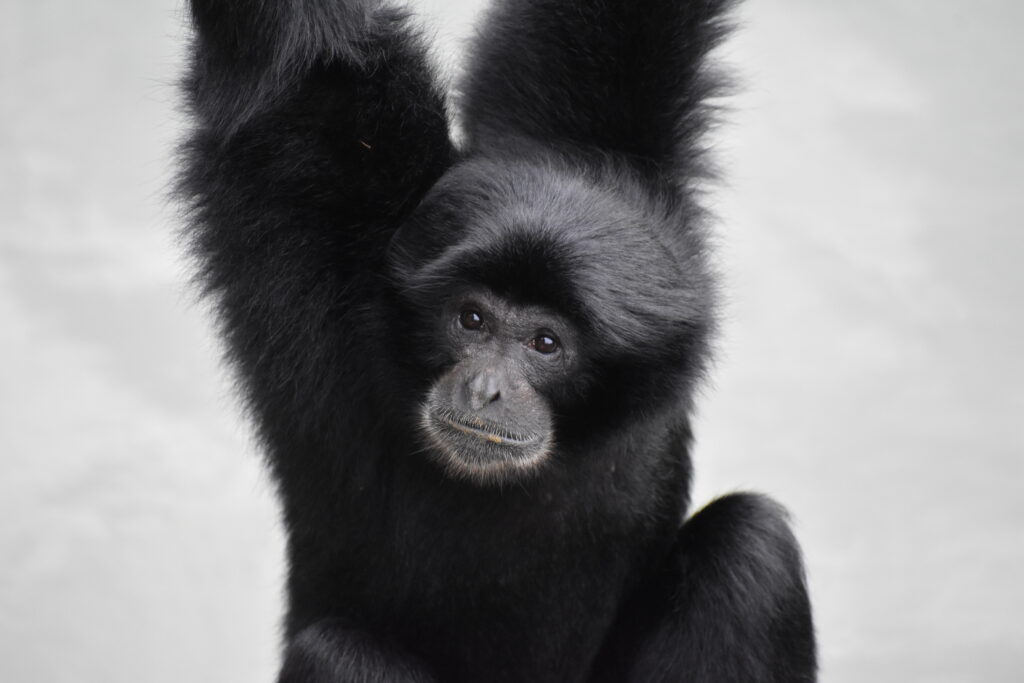
Observing teeth is one of the best ways to figure out what type of animal a skull belongs to. There are four main types of teeth to look out for:
- (4) Incisors: Sharp edged; used for biting into food, cutting, nipping or gnawing
- (3) Canines: Conical and sharp; used for tearing and piercing
- (2) Premolars: used for tearing and grinding
- (1) Molars: broad and flat; used for grinding and crushing. Look at the molars on the top set of teeth to help you determine the omnivores from the carnivores.
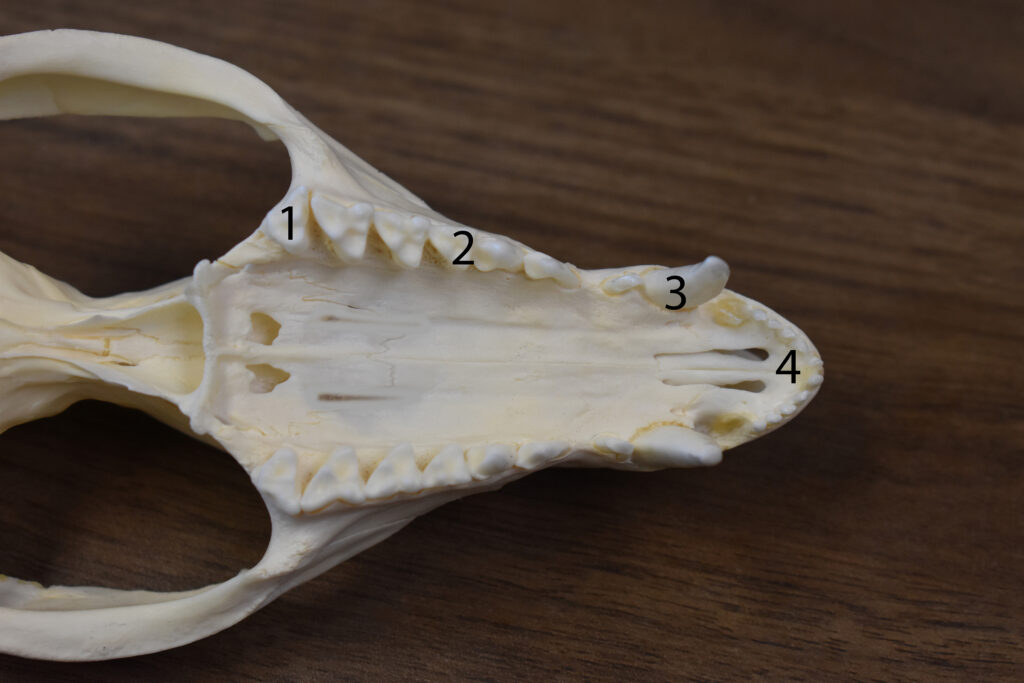
Herbivores, which only eat plants and plant material, have incisors and flat molars, but do not have canines. This is a skull from a rabbit.
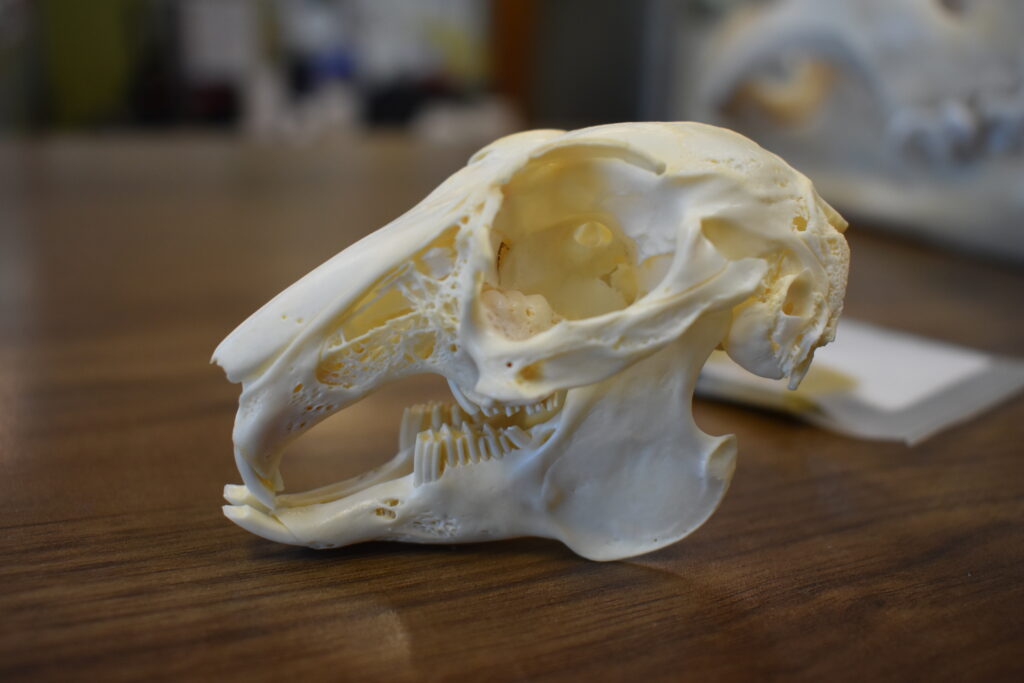
Carnivores only eat meat and have incisors, sharp molars and sharp canine teeth. This is an African lion skull.
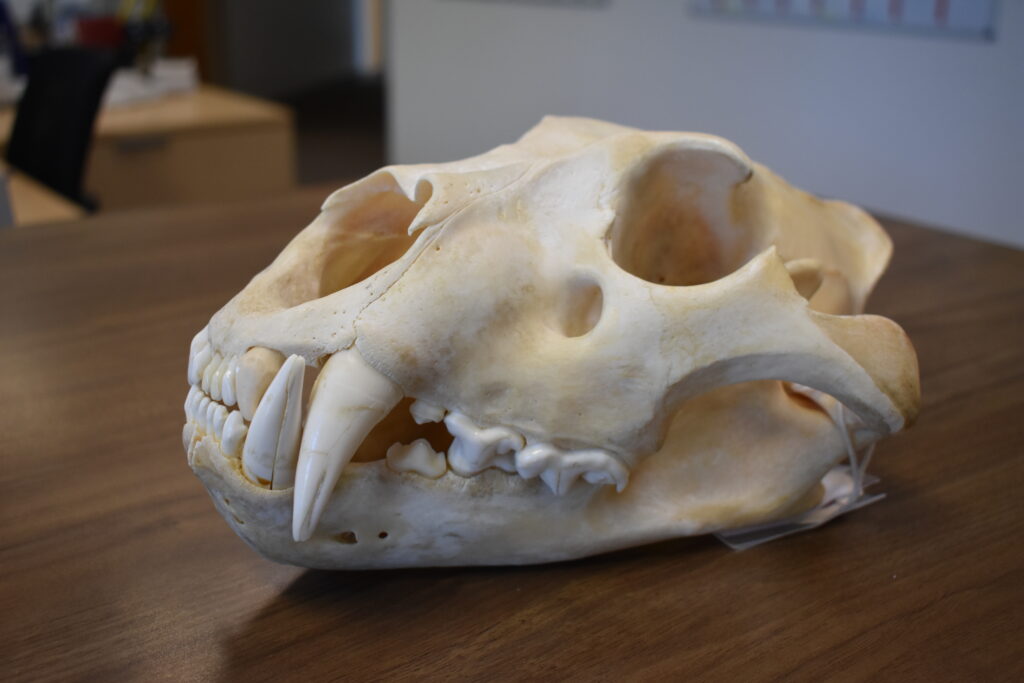
Omnivores, which eat both plants and meat, will have incisors and flat molars, but will also have sharp canines. This skull is from a Virginia opossum.
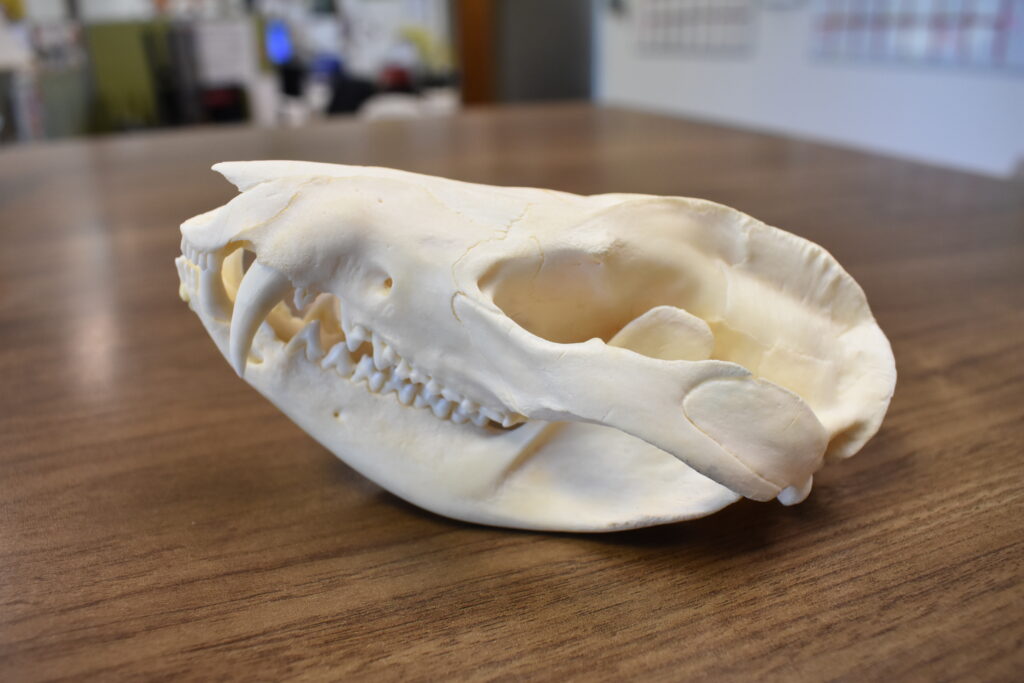
You can also look at the sagittal crest on top of the skull to determine how strong or weak an animal’s bite is. This crest is a ridge of bone running lengthwise along the midline of the top of a skull. This is where the muscles that control the jaw movement attach to, so animals with a larger crest, such as lions and opossums, have a stronger bite. Animals with a smaller crest or those without one, such as armadillos and rabbits, have a weaker bite.
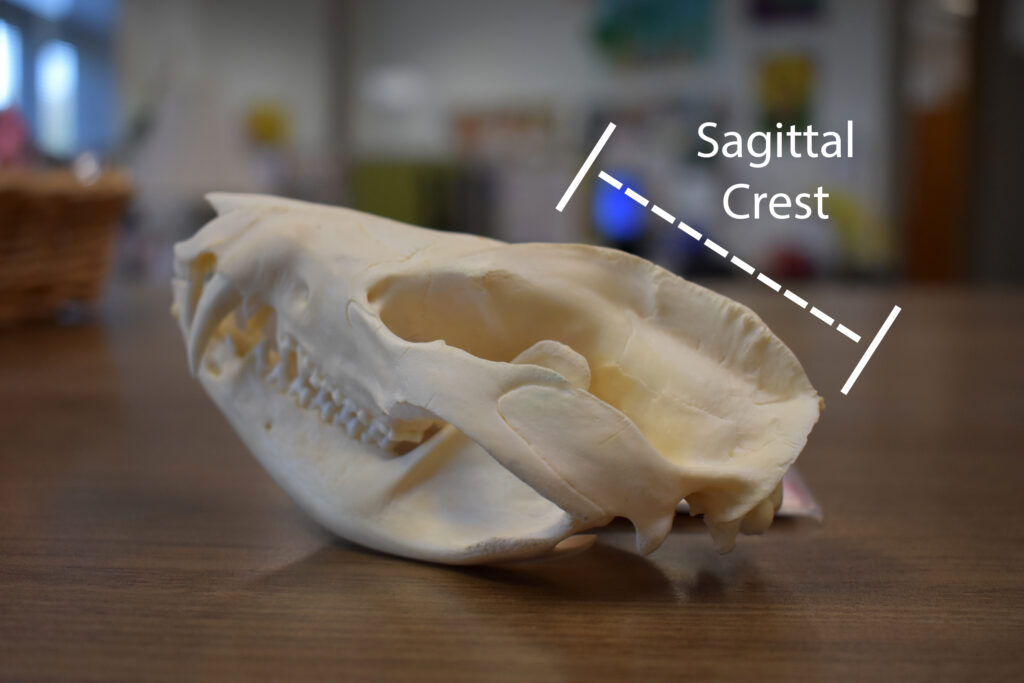
The last clue to inspect on a skull is the opening in the base of the skull, where the spinal cord would be. This can determine how the animal would walk – either on two legs or four. If the opening, known as the foramen magnum, is at a 90 degree angle (sticking straight down) then the animal walks on 2 legs (bipedal), like humans. The animal walks on all 4 legs if the opening is at a slight angle and the animal walks, swims, slithers or crawls if the opening is at flattened angle (180 degrees).
After inspecting all of these skull features, you should be able to figure out what kind of mammal it is! Now you may be wondering, “I’m not a scientist (yet), so why should I know how to investigate a skull? The answer is simple. If you ever go on a hike, take a walk on the beach or even spend time in your own backyard, you may run across an animal skull. By brushing up on your skull skills, you can figure out the skull with ease, while learning and having fun in the process!
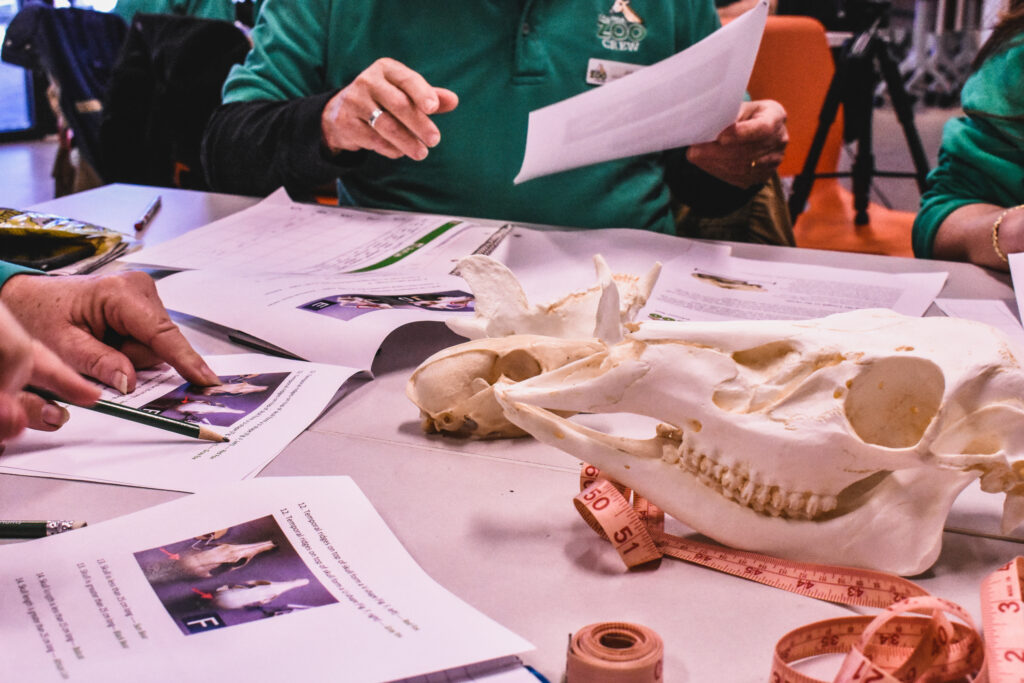
Can’t learn about skulls on your own? Book a Zoo Labs school program! Students will strengthen their understanding of animals and conservation through our new STEM lab programs, which are available at your school or on Zoo grounds. Please visit our website to learn more about these programs and to book a lab today!